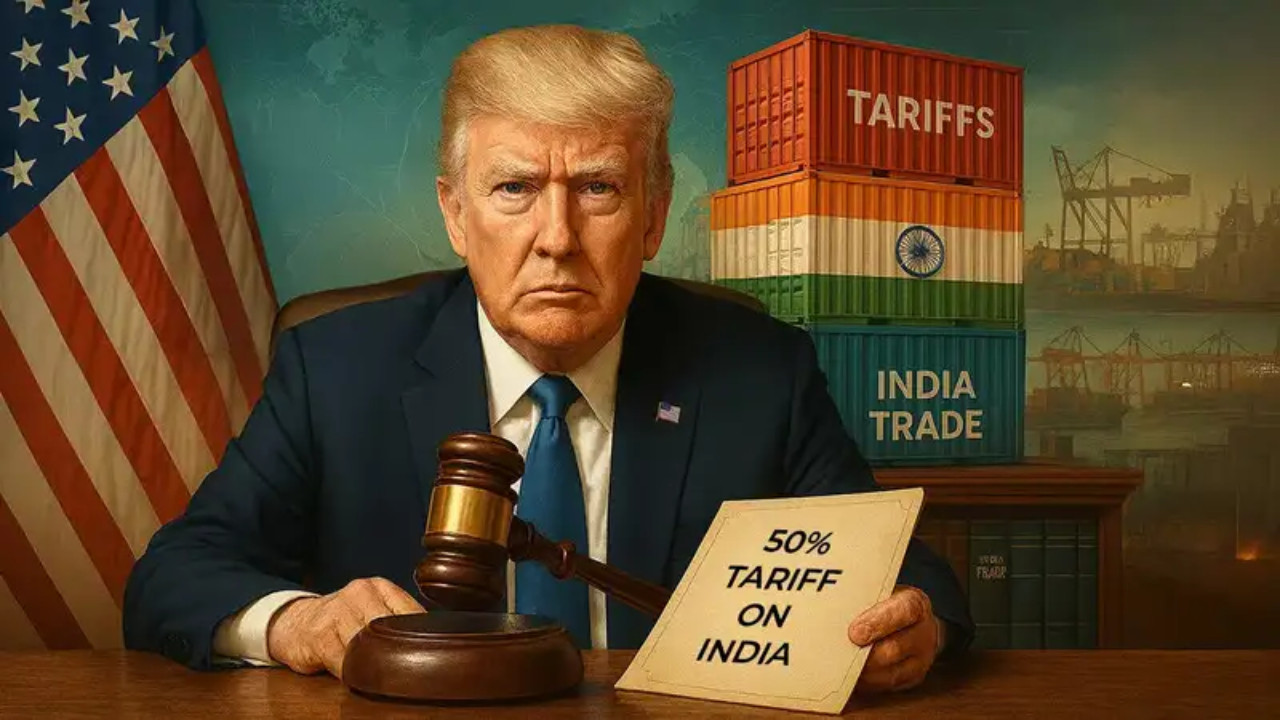In August, a Crisil report indicated that the U.S.’s 50% tariff hike on Indian imports tightened domestic financial conditions, significantly impacting equity markets. Foreign portfolio investors continued net outflows, particularly in equities, while the rupee weakened against the dollar. Despite these pressures, expectations of GST revisions and potential credit rating upgrades limited market declines.
Navigating the Choppy Waters: How US Tariffs Are Rocking Indian Equities
The Indian stock market has been feeling the heat lately, and a significant factor contributing to the turbulence is the ripple effect of US tariffs. Foreign Portfolio Investor (FPI) outflows have surged, hitting a worrying $4 billion, and the rupee has taken a tumble, reaching historic lows. What’s behind this financial storm, and what does it mean for Indian investors? Let’s dive in.
#### The Tariff Tango: US Policies and Indian Markets
Trade is a delicate dance, and when one partner changes the steps, the other feels the impact. Recent US tariff policies, designed to protect American industries, have inadvertently cast a shadow on emerging markets like India. These tariffs, often imposed on goods from countries perceived to be engaging in unfair trade practices, can disrupt global supply chains and alter investor sentiment.
The immediate effect is a decrease in demand for Indian exports to the US, which are subject to these newly imposed taxes. Companies exporting goods suddenly become less competitive. This perceived threat to corporate earnings causes international investors to rethink their positions in Indian equities. They begin to pull their money out, seeking safer havens.

#### FPI Exodus: Why Are Investors Running for Cover?
The outflow of foreign funds is a critical barometer of market confidence. When FPIs, major players in the Indian stock market, start selling their holdings and converting rupees into dollars, it puts downward pressure on both the stock market and the currency.
Why the sudden flight? Several factors are at play. Besides the direct impact of tariffs on exporters, there’s also a broader concern about the health of the global economy. A trade war between the US and other major economies creates uncertainty, making investors more risk-averse. Emerging markets, often seen as riskier investments than developed ones, are typically the first to suffer in such situations.
Furthermore, rising interest rates in the US can lure foreign investors back to American shores, as US bonds and other fixed-income instruments offer higher returns. This “reverse flow” of capital exacerbates the pressure on the Indian rupee and stock market.
#### Rupee Under Pressure: A Weakening Currency Amplifies the Pain
A depreciating rupee adds another layer of complexity. A weaker rupee makes imports more expensive, potentially fueling inflation. It also makes it more difficult for Indian companies with dollar-denominated debt to repay their loans. The Reserve Bank of India (RBI) often intervenes in the foreign exchange market to stabilize the currency, but its ability to do so is limited by its foreign exchange reserves.
The decline in the rupee reflects the increased demand for dollars as foreign investors repatriate their investments. This interplay between capital outflows and currency depreciation creates a vicious cycle, further eroding investor confidence.
#### Is There a Silver Lining? Opportunities Amidst the Turmoil
While the current situation is undoubtedly challenging, it’s essential to remember that market fluctuations are a normal part of the economic cycle. Periods of volatility can also present opportunities for astute investors.
For long-term investors, a market downturn can be a chance to buy quality stocks at discounted prices. Companies with strong fundamentals and a proven track record are likely to weather the storm and emerge even stronger.
Furthermore, the government and the RBI are actively working to mitigate the impact of external shocks. Measures to attract foreign investment, boost exports, and stabilize the rupee are all aimed at restoring confidence in the Indian economy. These are related to other factors that can influence investment opportunities within India. See [our article on current investment trends](internal-link-to-related-article).
#### Looking Ahead: Navigating the Uncertainties
The Indian stock market is currently navigating turbulent waters, largely influenced by external factors like US tariffs and global economic uncertainties. The outflow of foreign funds and the depreciation of the rupee are causing concern, but it’s important to maintain a long-term perspective.
While the immediate outlook may be uncertain, the Indian economy has strong underlying fundamentals. With continued reforms, infrastructure development, and a growing middle class, India has the potential to achieve significant economic growth in the years to come. For investors, understanding the dynamics at play and carefully evaluating investment opportunities will be crucial to navigating these choppy waters and achieving long-term financial success.







